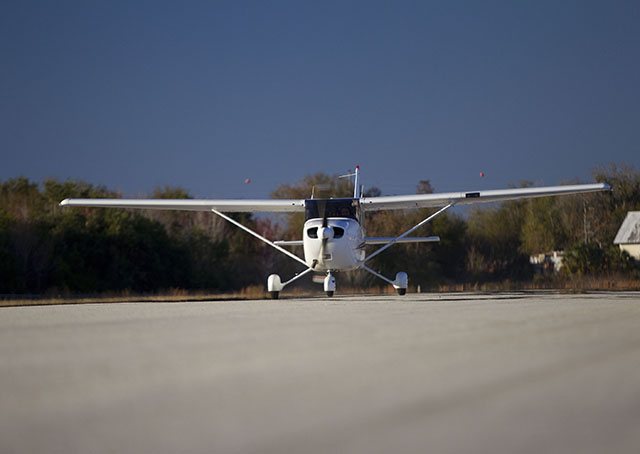
During a session practicing short-field takeoffs and landings at a small airport a few miles from your home base, your instructor asks you whether you think it would be prudent to intentionally abort a takeoff at rotation speed on this little runway, to simulate an engine-failure-on-takeoff scenario.
Your gut feeling is no. The performance calculations you ran through before flying over here to practice reassured you that a properly performed short-field takeoff from here would provide enough margin for comfort. Similarly, the short-field landing you performed on arrival made a satisfying demonstration of the technique, with plenty of runway remaining after you braked to a stop.
But to gobble up several hundred feet on a takeoff roll, pull back the power, regain brake effectiveness, and use another few hundred feet braking to a stop—well, that seems like a bad plan, one that would flirt with a runway overrun. Better to practice the rejected takeoff at the home airport on the 7,000-foot-long, 150-foot-wide runway you have come to know well during training. Not only would performing the simulation there afford you the luxury of a substantial safety margin, but you also could refer to the runway-distance-remaining signs along the runway to estimate how much distance is required to accelerate your trainer to almost liftoff speed, then decelerate to a full stop.
Coming up with a useful estimate for that scenario is to find the single-engine-airplane equivalent of a value known to multiengine pilots as the accelerate-stop distance. A Flight Training magazine article offered this definition of the accelerate-stop value that twin-engine pilots must learn: “The accelerate-stop distance is defined as the distance it will take to accelerate to liftoff speed, experience the failure of one engine, and still brake to a complete stop on the remaining runway.”
Unlike some scenarios that a twin-engine pilot would face, experiencing engine failure at rotation speed in your single-engine trainer will mean stopping straight ahead, regardless of the consequences.
Taking the accelerate-stop distance concept into consideration will sharpen your takeoff decision making, and build appreciation for finer points of short-field operations, such as “utilizing maximum available takeoff area,” hitting recommended airspeeds on climbout, and maintaining VY “to a safe maneuvering altitude” once you are airborne.
Remember that in warm weather or at high elevation, engine performance will be reduced, so increase your estimated accelerate-stop distance for those conditions.



